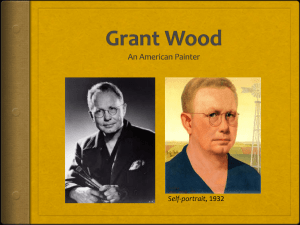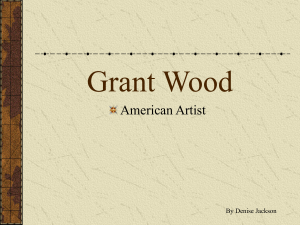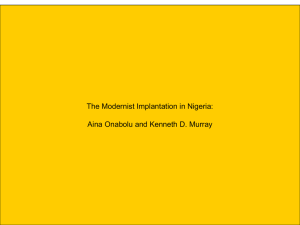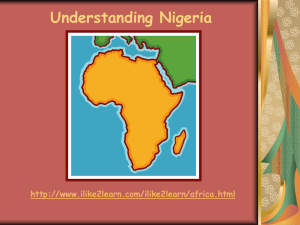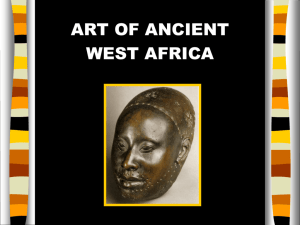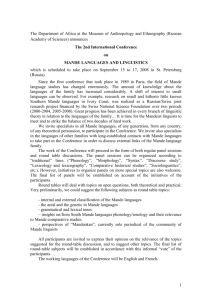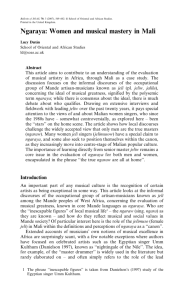WestAfricanArchitecture
advertisement
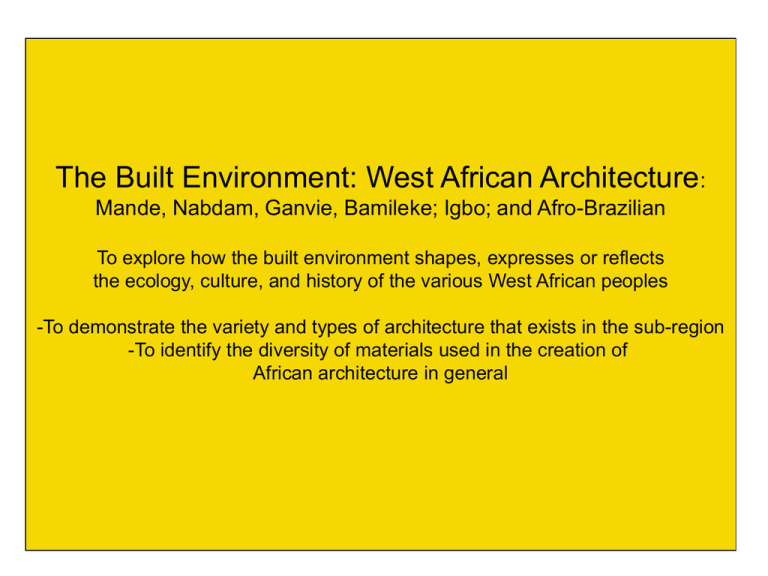
The Built Environment: West African Architecture: Mande, Nabdam, Ganvie, Bamileke; Igbo; and Afro-Brazilian To explore how the built environment shapes, expresses or reflects the ecology, culture, and history of the various West African peoples -To demonstrate the variety and types of architecture that exists in the sub-region -To identify the diversity of materials used in the creation of African architecture in general Mande Architecture Characteristics: Mud architecture with buttresses and parapets called toron Found throughout the Mande world—Mali, Ivory coast and Burkina Faso Structures include tombs of religious leaders, and Mosques Structures have minarets that towers above their roofs Djenne Mosque, Djenne, Mali, adobe bricks, Completed in 1907 after the original 14th century model Village Mosque at Kawara, Ivory Coast, Mande Architecture Tomb of Askia Mohammed, (1493-1529) Mali Sankore Mosque at Timbuktu, Mali, Originally built in 1300 AD Periodically revamped Since the 14th century Mosque at Dougouba, Mali Walata, Nabdam and Hausa Found in Mauritania; Ghana and Northern Nigeria Architecture made from stone and covered with mud Houses have two stories, flat roofs and interior courtyards Exterior walls painted with red ocher, doors and windows decorated with curvilinear patterns Interior of rooms painted with white and red motifs Motifs inspired by Arabic scripts and referred to as Arabesque Mostly painted by Women Courtyard, Mauritania Interior of the home of the Mayor of Walata with Arabesque decorations, Mauritania Arabesque decorations, Mauritania Façade of a Hausa compound decorated in low relief and paints, Zaria, Nigeria Relief decorations on mud walls, Hausa Architecture, Zaria, Nigeria Frafra Compound, Painted Mud walls, Northern Ghana Frafra painted house, pigments on mud walls, Ghana Granary with prefabricated roof Being raised into position Ground plan of Frafra compound Toguna—Men’s Meeting House--Mali Dogon Toguna with carved pillars, Mali Dogon Toguna, Carved wood, millet, stone and mud, Mali Bamileke—Cameroon Made by the Bamileke peoples in the Cameroon Grassland Houses are constructed from palm reeds, bamboo, leaves and wood Wood used in creating wooden structures that adorn the exterior of the building Mat woven from vegetable fibers used to create movable partitions inside the house Thatched roofs, no windows, low doors and raised thresholds Interior courtyard of the palace showing carved pillars Foumba, Bamum, Cameroon Framework of a square house ready for thatching, Cameroon Ganvie, Republic of Benin “The African Venice” Ganvie Village, D.R. Benin Stilt House, Ganvie Village, D.R. Benin Ganvie Villiage, D.R. Benin Afro-Portuguese Impulses: Baroque inspired architecture created by returnees Who settled in Lagos Nigeria, Freetown, Sierra Leone Characterized by elaborate façade with intricate decorative patterns Later evolved into animated/figurative images To communicate status Central Mosque, Afro-Portuguese Baroque Architecture, Joao Baptist Da Costa, 1908-1913, Lagos, Nigeria Adjavon House, Afro-Portuguese Baroque Architecture, Wydah, D.R. Benin Americo-Liberian Architecture Created by returnees; missionaries and administrators Characteristics: Two-story structures Constructed of wood, tin/zinc Mostly on stilts with veranda surrounding the first two floors Macon Hall House, Fortsville, Liberia, Late 19th century. Wood and Tin Igbo Mbari Houses Architecture created in response to urgent environmental and social issues/concerns A communal endeavor erected as shrines in veneration of Ala, the Earth Goddess Created with mud with representational images to depict scenes of everyday lives that might parody, critique, mirror, and or chronicle social events Sculptures are panted with uli decorative patterns Igbo Mbari House, Ala flanked by her children, Igboland, Nigeria Painted mud, 20th century Igbo Mbari House to Ala, the Earth Goddess, Adobe and wood, 20th century Doors, Windows and House Posts Door, Igbo, Wood, Early 20th century Door, Olowe, Wood, Yoruba 1910-1914 Verandah Posts, Olowe, Wood, Yoruba, 1910-1914





